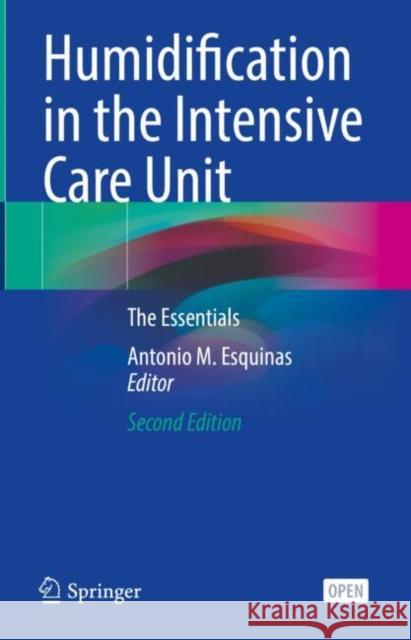Humidification in the Intensive Care Unit: The Essentials » książka
Humidification in the Intensive Care Unit: The Essentials
ISBN-13: 9783031239526 / Angielski / Twarda / 2023 / 349 str.
Humidification in the Intensive Care Unit: The Essentials
ISBN-13: 9783031239526 / Angielski / Twarda / 2023 / 349 str.
(netto: 537,98 VAT: 5%)
Najniższa cena z 30 dni: 539,74
ok. 22 dni roboczych.
Darmowa dostawa!
The 2ndedition of this book aims to underline how inadequate humidification of inspired gases can be the cause of a variety of serious problems and, thus, it brings new results and trends in humidification, updates about technological analyses in equipment’s ventilator modes and again the impact of humidification in complementary therapies such airway secretions in mechanical ventilated patients.These aspects are analysed in critically ill patients requiring various options of ventilatory approach (i.e. invasive, noninvasive, nasal high flow oxygen). The book starts with an exhaustive description of the pathophysiology of humidification in critically ill, and continues analyzing the impact of mechanical ventilation modalities (high-flow oxygen therapy, noninvasive mechanical ventilation, invasive mechanical ventilation, etc.), monitoring prevention of complications related to inadequate humidification. Important chapters are devoted to analyze determinants - ventilator associated pneumonia-humidification; humidification strategies in tracheostomized critical care patients; humidification and impact in airway clearance managements and the key aspects about humidification in the healthcare organization.This book is intended for all healthcare professionals working in Intensive Care Units (intensivists, anaesthesiologists, pulmonologist, neonatologist, nurses and respiratory therapist).
The 2nd edition of this book aims to underline how inadequate humidification of inspired gases can be the cause of a variety of serious problems and, thus, it brings new results and trends in humidification, updates about technological analyses in equipment’s ventilator modes and again the impact of humidification in complementary therapies such airway secretions in mechanical ventilated patients.These aspects are analysed in critically ill patients requiring various options of ventilatory approach (i.e. invasive, noninvasive, nasal high flow oxygen). The book starts with an exhaustive description of the pathophysiology of humidification in critically ill, and continues analyzing the impact of mechanical ventilation modalities (high-flow oxygen therapy, noninvasive mechanical ventilation, invasive mechanical ventilation, etc.), monitoring prevention of complications related to inadequate humidification. Important chapters are devoted to analyze determinants - ventilator associated pneumonia-humidification; humidification strategies in tracheostomized critical care patients; humidification and impact in airway clearance managements and the key aspects about humidification in the healthcare organization. This book is intended for all healthcare professionals working in Intensive Care Units (intensivists, anaesthesiologists, pulmonologist, neonatologist, nurses and respiratory therapist).











